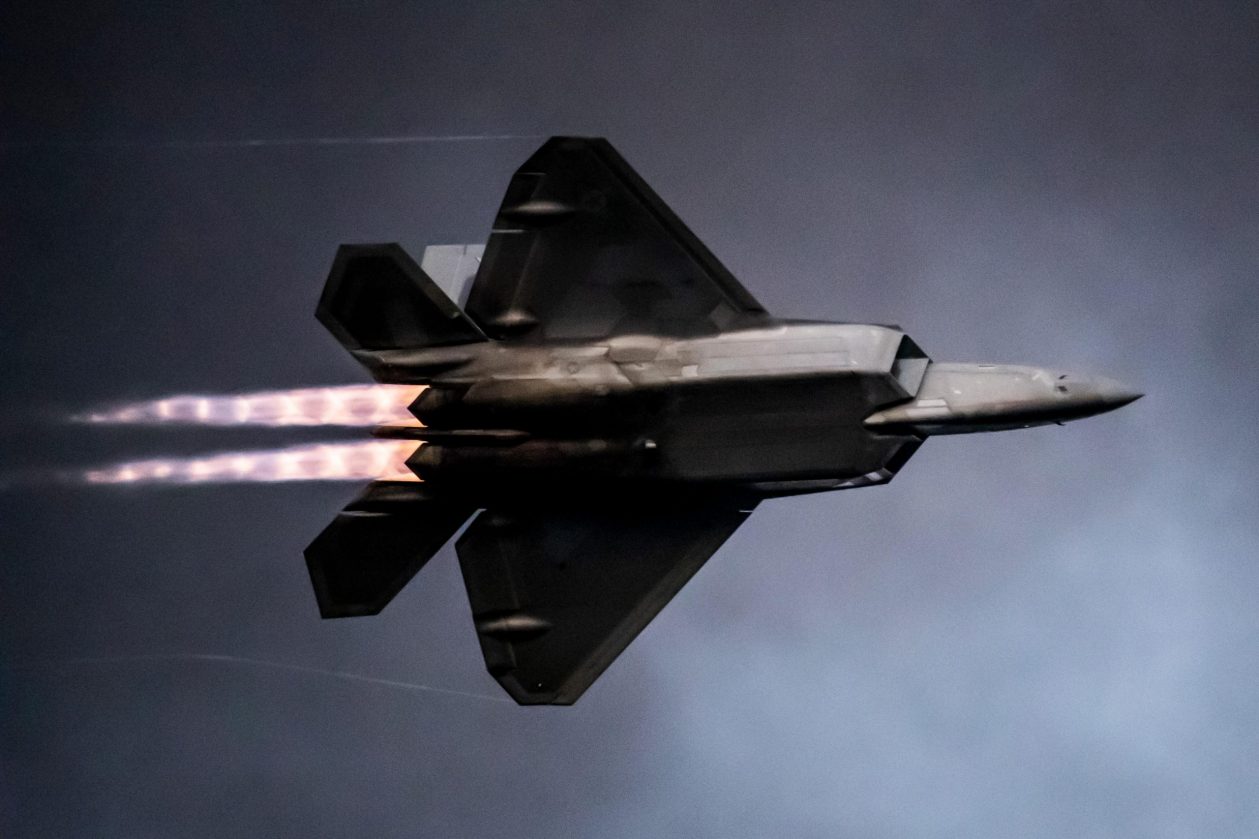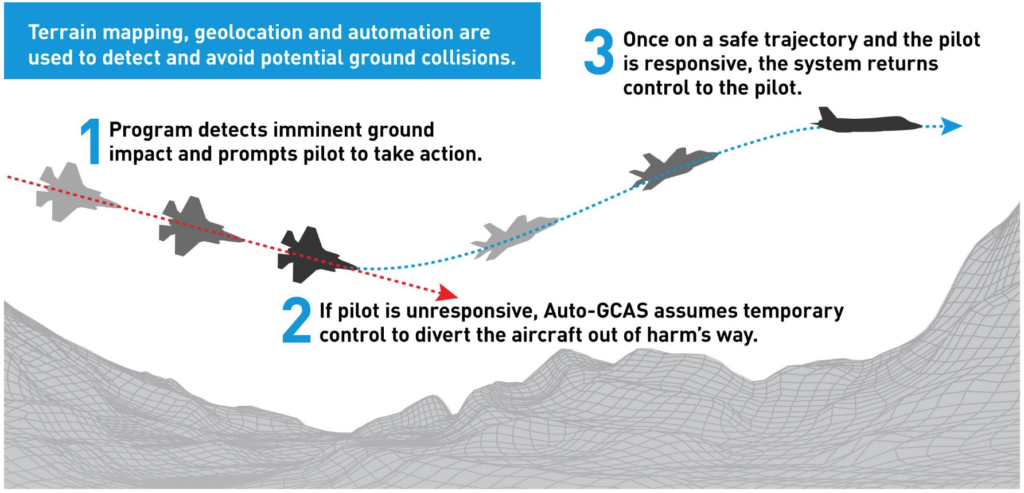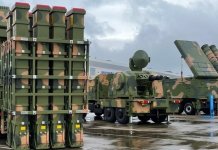For the first time, the US Air Force Safety Center disclosed how the Automatic Ground Collision Avoidance System (AGCAS) saved an F-22 Raptor and its pilot in 2020. The software had previously saved the Raptor and its pilots in two other incidents, according to reports.
Bang On! F-15 Eagles Demonstrate Prowess To Hit A Fast Moving Warship With A 2000P GBU-31 JDAM
Following its introduction on fighter jets, the technology has been attributed with preventing crashes of 12 F-16s and three F-22s. The report revealed that a pilot flying an F-22 in Alaska became disoriented, losing control in June 2020. If not for the AGCAS, the jet could have crashed.
Recent news of a 12th #F16 pilot save from hitting the ground by #AutoGCAS. Add in this story of #Raptor pilot save. Can always rebuild a plane. Can never replace our sons and daughters. Auto GCAS continues to prove invaluable in our fleets. https://t.co/79g3fZ1TmU
— Billie Flynn (@billieflynn) April 25, 2022
The F-22, in this case, had taken off from Joint Base Elmendorf–Richardson in Anchorage and was flying in “Instrument Meteorological Conditions,” or IMC.
This means that the pilot had to use his instruments due to weather and visibility. The inability of a pilot to interpret aircraft attitude, altitude, or airspeed about Earth or other points of reference is known as spatial disorientation.
“Nuking” London & Paris – Russian State-TV Threatens To Annihilate European Cities Using ‘Mighty’ Sarmat Missiles
This can happen in any sort of aircraft, both military and civilian. Flight in Instrument Meteorological Conditions (IMC), where inadequate visibility prevents a pilot from using external reference points and, in some situations, his senses stop “agreeing” with the actual attitude of the aircraft, is a common cause of Spatial-D.

In this case, the pilot of the stealth fighter jet “was focused on their situation display and over-banked the aircraft to 135 degrees angle of bank and began to accelerate rapidly as the nose continued to fall,” the Air Force Safety Center said.
“The aircraft was at an altitude of 13,520 feet above sea level, with its nose pointed downwards, traveling at a speed of approximately 600 mph.” The fighter jet was then pulled out of its dive by the software system onboard the aircraft, which “initiated an automatic fly-up.”
The aircraft was also apparently inverted when the software was enabled. When the system finished retrieving the jet from its dive, it was around 2,600 feet above the ground. This incident emphasizes the importance of AGCAS.
Similar Incidents involving F-22s
On December 6, 2016, another F-22 incident involving AGCAS took place over the Gulf of Mexico that had taken off from Tyndall Air Force Base in Florida. The Air Force Safety Center, like the Alaska incident, blamed the occurrence on spatial disorientation.
On this occasion, the pilot received a warning from the software. According to the Safety Center, the aviator “did not recognize a nose-low attitude while rolling to a 45-degree angle of bank and descending below 2,000 feet MSL [mean sea level] over water.”
The signal rang in the cockpit at 1,540 feet above sea level, and the pilot was able to recover the plane on his own. The aircraft was falling at a speed of 9,400 feet per minute at that time.
Russia’s “Staggering” Move – Battered By Sanctions, Moscow Turns To Iran For Help On Aircraft Repair & Maintenance
The Safety Center said, “It was determined to be a save because the pilot was spatially disoriented and unaware of the altitude and attitude of the aircraft at the time of the Auto-GCAS alert and likely would have flown below the 1,000 feet floor or impacted the water without the aural warning.”
The plane reached a low altitude of 1,430 above sea level.

On March 2, 2021, another F-22 incident took place over the Pacific when the pilot was practicing basic fighter maneuvers with another aircraft after departing from Marine Corps Air Station Miramar in California.
“The pilot lost sight of the other aircraft” while performing a specific dogfighting maneuver, the report said.
The pilot then attempted to locate the second plane, but accidentally drove the aircraft into a nose-low acceleration toward the ocean. AGCAS then gained control of the jet and rectified it while it was 4,520 feet above the water, with its nose inclined down 42 degrees and flying at 800 miles per hour.
During the dive, the F-22 came within 1,730 feet of the water below.
Although the Air Force Safety Center considers all three instances to be AGCAS software-based saves, Lockheed Martin only views the 2020 event to be a save attributed to the software. T
his discrepancy in viewpoints appears to be due to changes in the data available to evaluate the events, as well as software differences between AGCAS versions.
What is AGCAS?
Given spatial disorientation has already resulted in the loss of numerous planes and pilots, the Pilot-Activated Recovery System was developed as a first response to the problem.
Choking Europe’s Food Basket – How Russia Is Following The Classical “3B” Naval Strategy Against Ukraine
As long as the pilot can activate the technology, the Pilot-Activated Recovery System (PARS) will save pilots suffering from identified Spatial-D. They have to press a button, and the computer will take charge of the airplane and return it to a safe position.
However, there are still circumstances where the pilots are unable to evaluate if there is ongoing spatial disorientation.
The AGCAS was intended to address this issue. AGCAS, unlike PARS (Precision approach radar), automatically triggers inputs to the flight controls without the need for human intervention.
When Controlled Flight Into Terrain (CFIT) is predicted, the technology uses advanced computer software, terrain maps, GPS, and prediction algorithms to “take the jet” from the pilot.
AGCAS is not found on every fighter jet. The decision to equip the US Air Force’s three fly-by-wire fighter jet variants occurred roughly twelve years ago.
According to the Air Force Safety Center, it is installed on 100% of active F-22s, approximately 100% of the F-35A models flown by the Air Force, and around two-thirds of F-16s.
- Contact the author at ashishmichel@gmail.com
- Follow EurAsian Times on Google News




